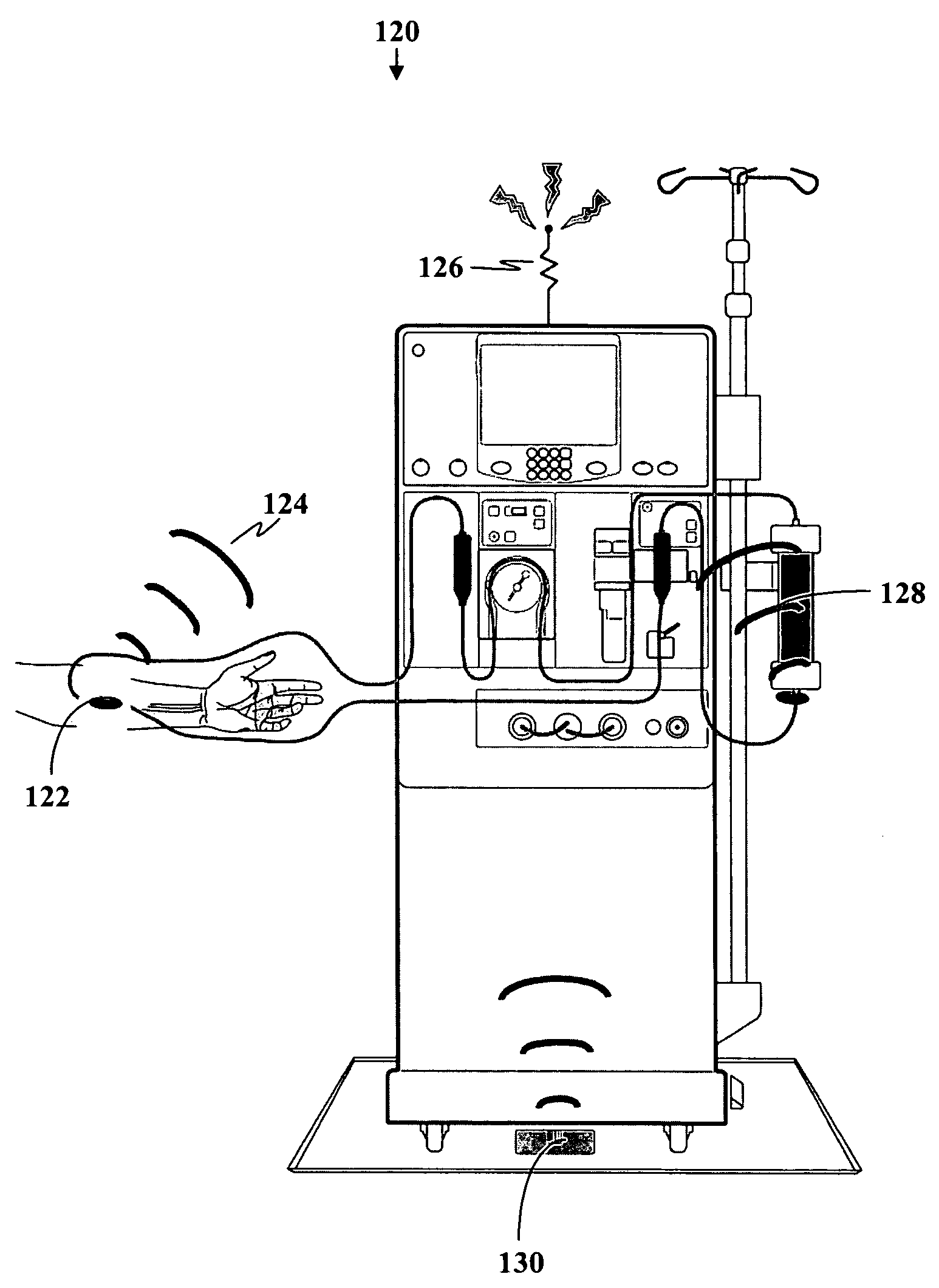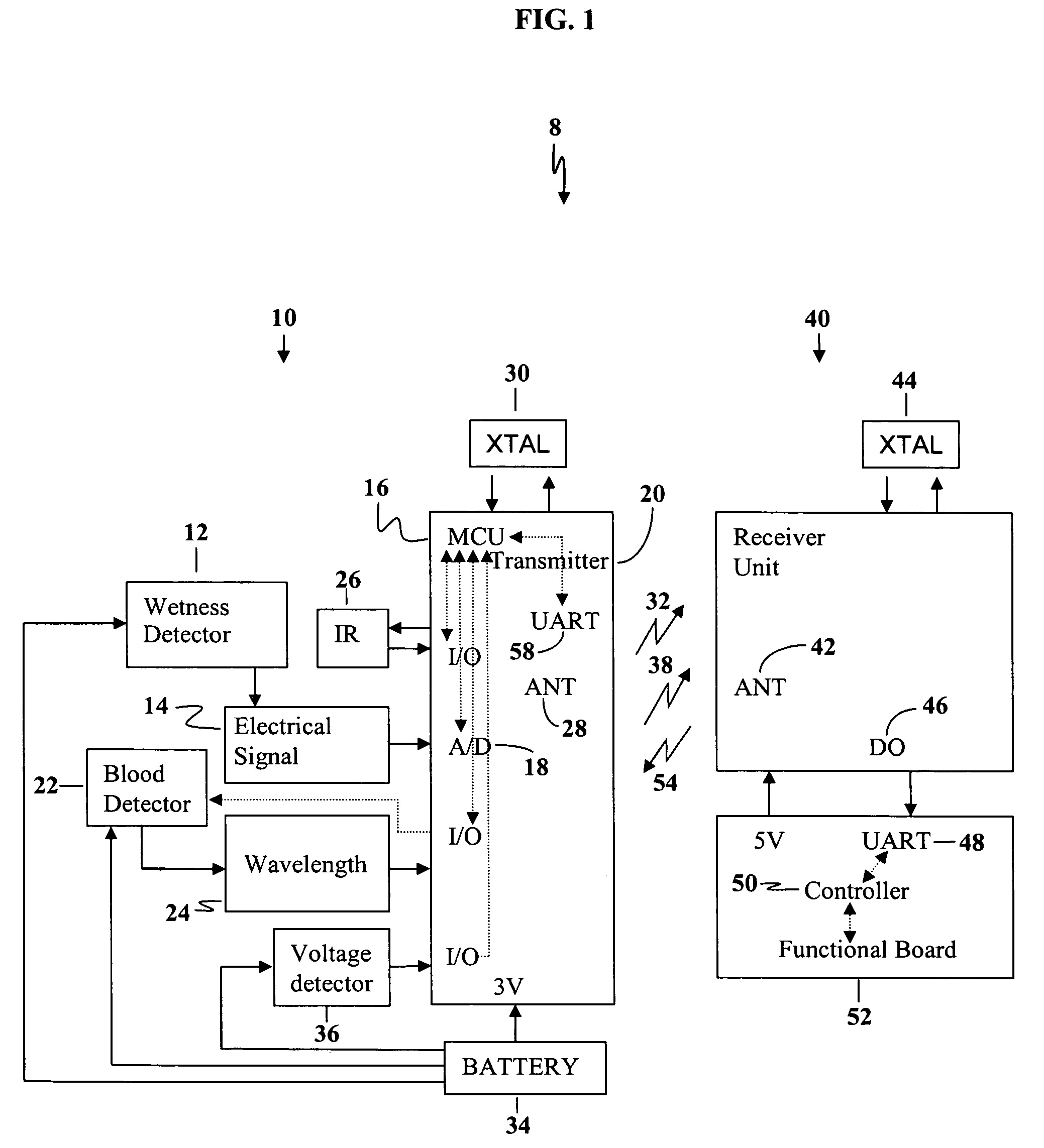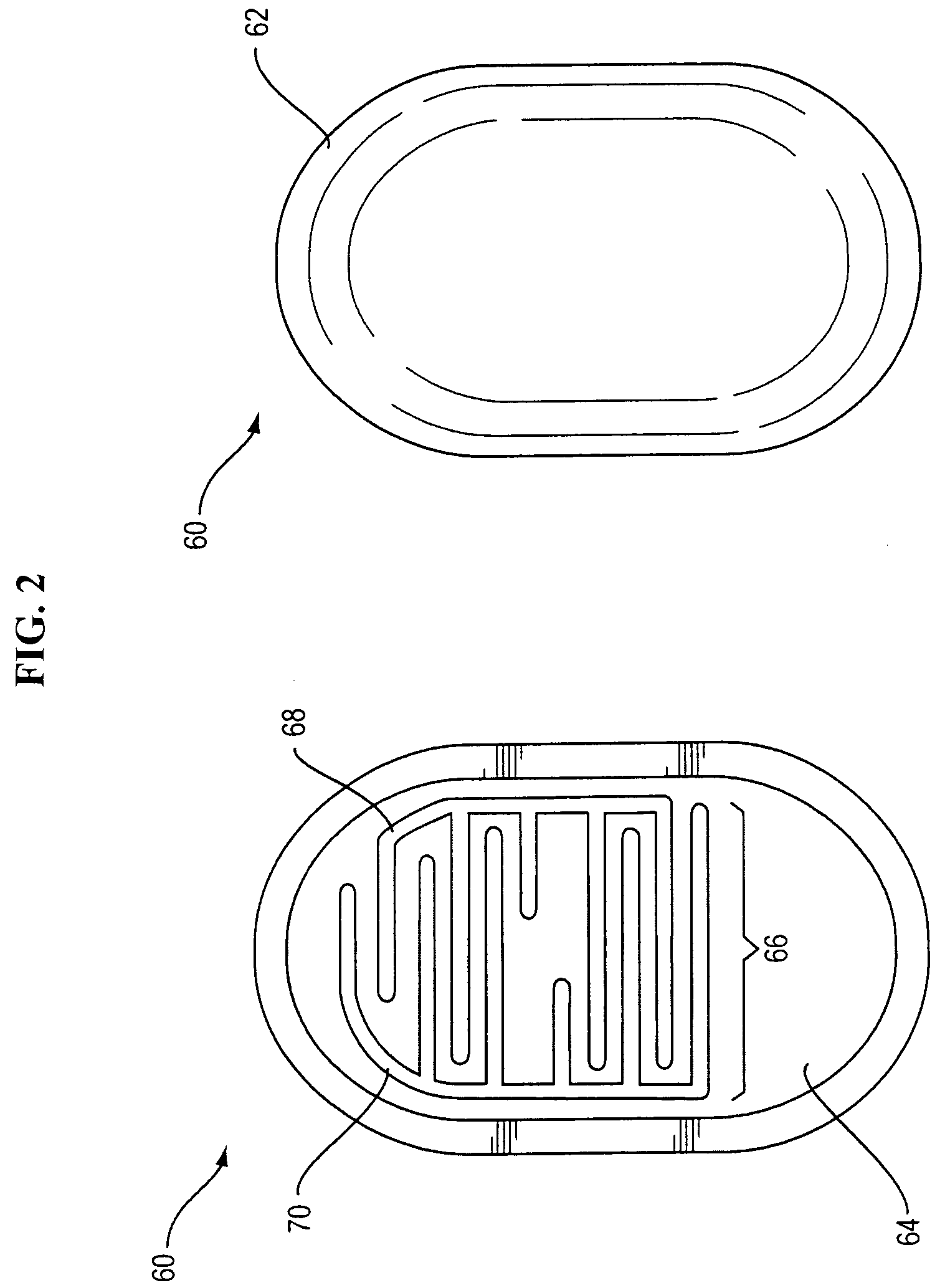Wetness sensor
a sensor and wetness technology, applied in the field of wetness sensors, can solve the problems of ineffectiveness, high cost, and high cost of wetness detectors, and achieve the effect of rapid detection and rapid trigger of alerts
- Summary
- Abstract
- Description
- Claims
- Application Information
AI Technical Summary
Benefits of technology
Problems solved by technology
Method used
Image
Examples
Embodiment Construction
[0018]The present invention relates to a system for detecting the presence of wetness, in particular, wetness due to a liquid leak. The wetness detector system is comprised of a wetness sensor, an attachment device for attaching the wetness sensor to the components of the system and a receiver unit in communication with the wetness sensor. The wetness sensor of the wetness detector system is comprised of: a solid support comprising a non-electrically conductive material having a first and second surface, an electronic transmitter attached to the first surface of the solid support, a trace antenna coupled to the electronic transmitter on the first surface of the solid support, an electric circuit printed on said second surface of the solid support for detecting the presence of wetness, a microcontroller in communication with the electronic transmitter and electric circuit, a power source connected to the microcontroller, electronic transmitter and electric circuit and a voltage detec...
PUM
 Login to View More
Login to View More Abstract
Description
Claims
Application Information
 Login to View More
Login to View More - R&D
- Intellectual Property
- Life Sciences
- Materials
- Tech Scout
- Unparalleled Data Quality
- Higher Quality Content
- 60% Fewer Hallucinations
Browse by: Latest US Patents, China's latest patents, Technical Efficacy Thesaurus, Application Domain, Technology Topic, Popular Technical Reports.
© 2025 PatSnap. All rights reserved.Legal|Privacy policy|Modern Slavery Act Transparency Statement|Sitemap|About US| Contact US: help@patsnap.com



